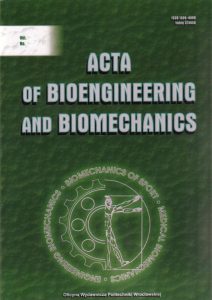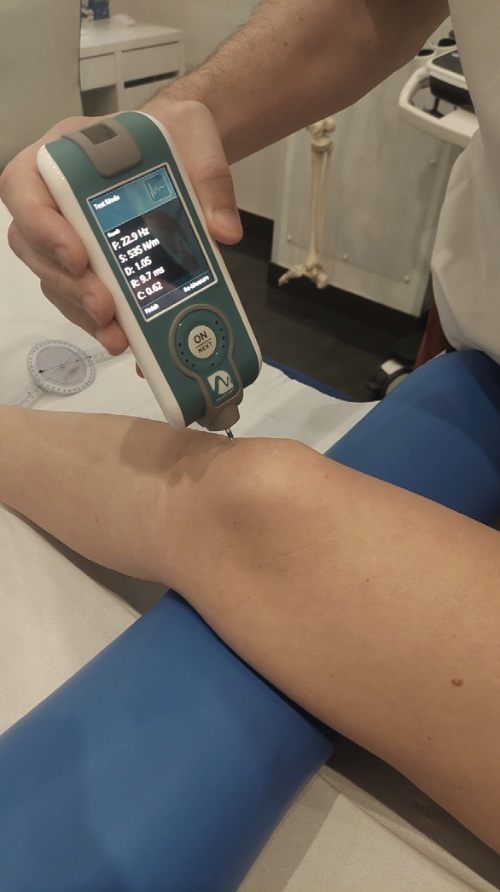Publications

Mechanical properties of the patellar tendon in weightlifting athletes – the utility of myotonometry. Adaptations of patellar tendon to mechanical loading.
Authors: Sebastian Szajkowski 1, Jaroslaw Pasek 2, Michal Dwornik 3, Grzegorz Cieslar 4
Affiliations:
- Faculty of Medical and Social Sciences, Warsaw Medical Academy of Applied Sciences, Warsaw, Poland
- Collegium Medicum im dr Wladyslawa Bieganskiego, Jan Dlugosz University in Czestochowa, Czestochowa, Poland
- Center of Medical Rehabilitation and Osteopathy Rehapunkt, Piastow, Poland
- Department of Internal Medicine, Angiology and Physical Medicine, Faculty of Medical Sciences in Zabrze, Medical University of Silesia in Katowice, Bytom, Poland
Journal: Acta of Bioengineering and Biomechanics - June 2024, Volume 26, Issue 1, Pages 153-164 (DOI: 10.37190/abb-02396-2024-04)
-
Field & Applications:
- Sport
- Normatives
- Methodology
- Myotonometry can be successfully used to assess the impact of physical activity on the condition of muscles and tendons in people of different ages.
- Monitoring potential tissue overload by using myotonometry is important for assessing the risk of injury and managing training and rehabilitation.
Purpose: Tendons adapt to loads applied to them, by changing their own mechanical properties. The purpose of the study was to examine the influence of practicing sport in the form of weightlifting/strength training by individuals of various age groups upon the mechanical properties of the patellar tendon.
Methods: 200 people participated in the study. Group 1 (n = 109) comprised individuals training strength sports as amateurs, group 2 (n = 91) consisted of people who were not physically active. The patellar tendon was examined in various positions of the knee joint: 0, 30, 60, 90, 120° respectively. The following mechanical parameters were measured with the use of a device for myotonometric measurements, MyotonPRO: frequency [Hz], stiffness [N/m], decrement [log], relaxation time [ms] and creep [De]. The results were compared as regards physical activity, training history, BMI value, and gender.
Results: Stiffness and tone increased while elasticity decreased with patellar tendon stretching degree. In the group of individuals in training, greater stiffness and tone and lower elasticity were noted. Moreover, stiffness and tone appeared to be higher in elderly people and individuals with longer training experience.
Conclusions: Mechanical loads connected with strength training result in development of adaptive changes in the patellar tendon, in the form of higher stiffness and tone, as well as lower elasticity. The MyotonPRO device is useful for quantitative assessment of the mechanical properties of patellar tendon.

Figure 1. The MyotonPRO measurement technique
Keywords: athletes, mechanical properties, myotonometry, patellar tendon, stiffness
The results of the conducted research confirmed the hypothesis that myotonometry can be used in the quantitative assessment of mechanical properties of patellar tendon in people of various ages, because it ensures high accuracy and repeatability of measurements. When used in the course of physical examination, it may supplement and, where justified, replace the subjective method of palpation. Our study is a contribution to the establishment of reference values in the field of myotonometry of patellar tendon for healthy people of various ages, practicing sports as amateurs, as well as for people not practicing any form of physical exercises.


